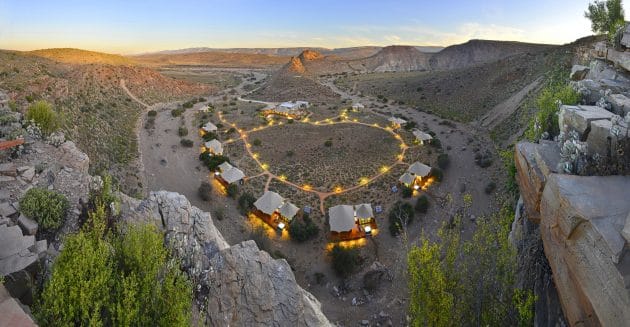Africa’s Vanishing Cultures
Renowned photographers and chroniclers of Africa’s vanishing cultures, Angela Fisher and Carol Beckwith have announced seven exciting fieldwork trips for 2014. Each expedition will take them into the heart of Africa’s most remote regions, often at the invitation of local Chieftans and village elders. Friends and families, often photographed by them for one of their 15 books, await their return to record vanishing ceremonies and lifestyles.

Burkina FasoBeckwith and Fisher have just completed their first expedition of 2014 documenting the Masquerades in . “For the past three and a half weeks we have been travelling to remote villages in Burkina Faso to photograph and film spirit masks from the sacred forest. These masks are traditionally brought out at times of initiation into adulthood and at funerals: they are also used to protect the village and to ensure successful harvests. Composed of elements found in the bush such as leaves, bark, fiber, and stalks of millet, the masks are believed to possess both the power of the spirits of the bush and the wisdom of the ancestors. At the end of our journey we attended the spectacular biannual Festival of Masks in Dedougou where we photographed and filmed an extraordinary array of masquerades from many corners of West Africa — Ivory Coast, Mali, Benin, Togo, and Burkina Faso.”
African Ceremonies on Google Cultural Institue
The upcoming expeditions for 2014 will include, Kara Jumping of the Bull Male Initiations in Ethiopia; Turkana Wedding in Kenya, Salampasu Initiations in Congo; Marriage Rituals in Somaliland; Moulids on the Nile in Egypt and Ceremonies of the Bamun Royal Kingdom in Cameroon.
In August 2011 an expedition to Congo took them to photograph and film ceremonies in the Royal Kuba Kingdom as guests of the Royal family in the Democratic Republic of Congo. These Kingdoms are renowned for their sculptures in wood, raffia textiles, traditional palaces and magnificent costumes worn during rituals in the Royal court. The photographs will be published in their next book: “African Twilight.”

In their recent trip to the banks of the Omo River in South West Ethiopia in 2013, Beckwith and Fisher recorded some of the last images and rituals of people who are being taken from their traditional homes.
Commenting on the rapid changes facing traditional Africa, “We have witnessed the loss of traditional cultural practices and beliefs as each new generation moves forward and embraces the 21st century, bringing with it the powerful influence of the outside world. We have felt compassion for the elders as they watch their traditional world and values disappear, and empathy for the young generation seeking a new way of life. We are touched by the children of this generation who come to us asking about their grandparents — who were they, where did they come from and what did they believe in? Over 40% of what we have recorded during the past 35 years no longer exists or has changed dramatically. We have dedicated our lives to documenting the last of the truly traditional cultures on the continent.”
Carol Beckwith and Angela Fisher met in Kenya over thirty–five years ago and teamed up to form one of the greatest duo’s in photography. Their unique, award–winning images, covering 150 African cultures, were taken on journeys totaling 270,000 miles throughout Africa. As young female explorers, they saw Africa through the eyes of the people they lived with, photographing each group meticulously, from their body adornment to their ritual passages through life. Each image tells a story of the lives of the men, women and children within the vibrant traditions of these cultures. Their extraordinary photographs are recorded in fourteen best–selling books and in their films.
Their new book “Painted Bodies” (2012) follows “Maasai” (1980), “Nomads of Niger” (1983), “Africa Adorned” (1984), “African Ark” (1990), “African Ceremonies” (1999), “Passages” (2000), “Faces of Africa” (2004), “Lamu: Kenya’s Enchanted Island” (2009), and “Dinka” (2010). The special limited edition books, hand printed in Santiago, Chile, are titled “Surma,” “Karo,” “Maasai,” and “Dinka.”

“African Ceremonies,” their defining body of work published fourteen years ago, is a double volume that sold close to one hundred thousand copies. It is a pan–African study of rituals and rites of passage from birth to death, covering 93 ceremonies from 26 countries. The book won the United Nations Award for Excellence for “vision and understanding of the role of cultural traditions in the pursuit of world peace.”
Honored twice with the Annisfield–Wolf Book Award in race relations for “outstanding contributions to the understanding of cultural diversity and prejudice,” Angela and Carol are also winners of the Royal Geographical Society of London’s Cherry Kearton Medal for their contribution to the photographic recording of African ethnography and ritual.
The photographers have made four films about traditional Africa, including Way of the Wodaabe (1986), The Painter and the Fighter, and two programs for the Millennium Series Tribal Wisdom and The Modern World. Numerous exhibitions of their photography and films have been shown in museums and galleries around the world. In 2000 their Passages exhibition opened at the Brooklyn Museum of Art featuring 97 mural photographs, six films and a selection of African masks, sculpture and jewelry. This exhibition travelled to seven museums on three continents and can now be viewed on the Google Cultural Institute’s website.
In May, 2011 Carol and Angela were invited to participate in the National Geographic Live lecture series where they presented highlights from their life work, culminating in their publication “Dinka: The Legendary Cattle Keepers of Sudan.” In packed auditoriums, the 7000 people who heard their lectures in Seattle voted it to be one of the most interesting in the annual Live Lecture Series.
“Beckwith and Fisher have done more than anyone to awaken the world’s appreciation of everything African, from adornment to the rapidly vanishing ceremonies,” says Peter C. Keller PHD, President of Bowers Museum, Santa Ana.
In the words of Dr. Donald Johanson, Director, Institute of Human Origins, “Carol Beckwith and Angela Fisher are not only truly remarkable photographers, but their dedication to preserving for all time the dazzling diversity of African ceremonies is unparalleled. Their celebrations of African cultures will forever serve as the most compelling and passionate portrayal of the splendor of human creativity from the very continent that gave rise to all humanity.”





